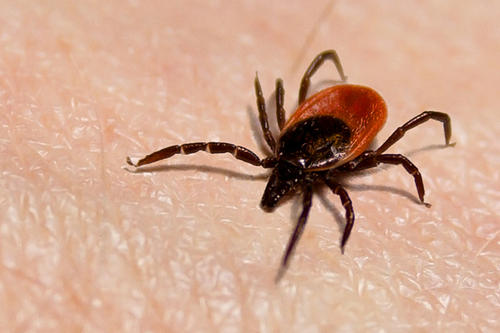
Are you ticked off that our lovely summer woods are so full of ticks? So is Benjamin Clarke—especially because some of them carry nasty diseases like Lyme disease.
An associate professor in the Medical School, Duluth Campus, Clarke wants to know where the blacklegged ticks—also called deer ticks or Ixodes, their genus name—are thickest in northeastern Minnesota and how likely they are to be carrying Lyme disease. In other words, he’s looking for the “hot zones” for Lyme disease. To find them, he’s dispatching students to the wilderness to collect the tiny nuisances.
“We will have between six and 16 students going out on a drag,” says Clarke of the Medical School, Duluth Campus, Department of Biomedical Sciences. “The students will both collect and process the ticks to look for the bacteria Borrelia burgdorferi, which cause Lyme disease.”
The students are catching the ticks by dragging nets through foliage at four sites in Minnesota’s Arrowhead region. After they have returned and identified the ones that were carrying B. burgdorferi, they will construct a map showing where—e.g., dry forest, lakeshores, swamps, or streambanks—they found the most ticks and the most disease bacteria.
“We will have a website established by the end of the summer to showcase an "Ixodes Tick Storybook" and to include a risk map of the region,” says Clarke.
The students are participants in two hands-on summer programs at UMD: Bridges to the Baccalaureate, which links UMD to Lake Superior College and Fond du Lac Tribal College, and Pathways, which links the U Medical School to UMD undergrads.
If you’re venturing into the woods, Clarke offers this advice: “Wear light-colored clothes to better see any ticks, tuck pants into socks, and vigilance-screen your body afterward. Repellents also help.” And if you do find a tick in your skin, don’t wait for a “bull’s-eye rash” to appear—seek a doctor right away.
- Categories:
- Health




